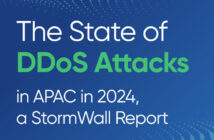Media Release
The Physical Security Industry has undergone significant structural changes in the last 3 years and this has accelerated in 2012 driven by the need to combat the worst trading conditions for decades. The structure of the business has morphed not just to compensate or accommodate; but also to meet and beat challenges and deliver growth.
Does Size Matter?
Our 2012 Annual Report (http://memoori.com/physical-security-2012) shows that both the middle strata and smaller companies have increased their share of the market. The minnows are taking on the sharks and winning, both through the development of leading edge products and growth through acquisition and alliances. But the main driver is that they are developing innovative products in alliances with their channel partners to deliver products and systems that are transforming the security industry from a cost centre to a cash generator.
The major traditional conglomerates have in the past maintained and/or increased their share through acquisition but in the last 3 years, with the exception of one company, none have made a significant acquisition. These companies have grown through their system sales and major integration and IT-Convergence projects. However their brand image has suffered and their influence in the product business has waned. Are these signs of disenchantment with the security business or just that other businesses such as cleantech have had priority on their time and investment dollars?
New Routes to Market
The second structural change that has contributed to wringing more out of a cash strapped market is that the routes to market have changed. System integrators now take some 50% of all product sales. Manufacturers, particularly in the medium sized category, have for some time been partnering with system integrators to develop solutions that work across different vertical markets that add value not just for improving security but also to increase operating efficiencies. Again the major conglomerates have been less effective in making this change.
IP Networking Products are the Main Driver of Growth
The development of IP Networking products right across the physical security industry has been the main driver of growth. It offers end users much more than analogue when products are joined with other building services and the business enterprise. These additional benefits for the end user have definitely increased demand because they deliver a much improved ROI. Specialist manufacturers in all 3 sectors of the market have made a major contribution to developing IP Networking products.
Market Growth by Region
The developed markets of North America and Europe are losing market share to Asia and particularly China which will be the largest single market before the end of this decade. Asia has increased its share to over 35% for all physical security systems, whilst growth has been much more modest in North America and Western Europe with an aggregate increase of 6 / 7% and 3.5% respectively over the last 3 years. This trend will continue well into the next decade.
There is an enormous latent demand waiting to be exploited in the emerging markets of the world. China for example currently has a penetration of one sixth of the USA but this stood at one tenth in 2011.
The Chinese market is growing rapidly by using up this latent potential. The penetration of physical security products is highest in North America where GDP per capita is forecast at $49,340 and security sales per capita $14.81. In the EU(7) GDP per Capita is projected at $42,240 and security sales per capita at $11.5. With such high penetrations, growth in these markets has to come from the opening up of new vertical markets, the migration from analogue to IP network systems and continual improvement in delivering a higher ROI. However these markets have suffered from very difficult economic trading conditions and little improvement is likely over the next 2 years. So continued growth in the market has to come from the BRIC and emerging markets.
It will be interesting to see if the major conglomerates can perform better in the emerging markets than the middle strata companies and so win back lost share but we suspect after 3 years of building up their financial reserves they will again return to growth through acquisition.





